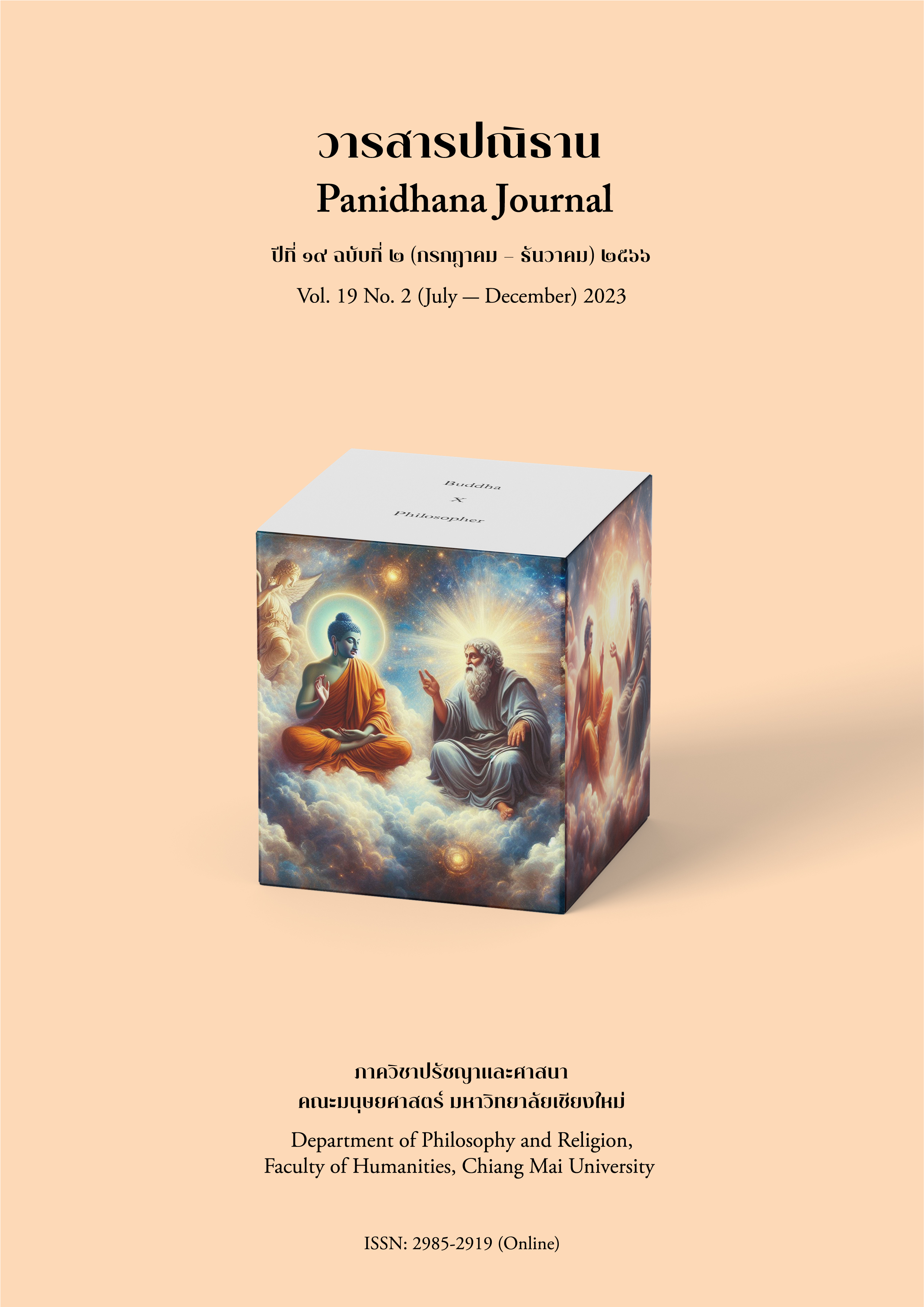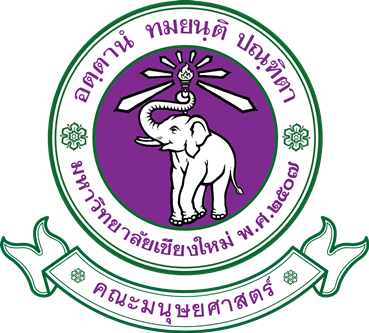คนข้ามเพศและเส้นทางสู่ความหลุดพ้นในบริบทสังคมพุทธเถรวาทไทยปัจจุบัน
คำสำคัญ:
คนข้ามเพศ, ความเป็นอื่น, พื้นที่ที่สาม, ธรรมลูกผสม, พุทธศาสนาเถรวาทไทยในปัจจุบันบทคัดย่อ
บทความวิจัยนี้เป็นการศึกษาเชิงชาติพันธุ์ (ethnographic study) มีวัตถุประสงค์เพื่อศึกษาและวิเคราะห์ความเป็นอื่น (othering) สถานธรรมะที่สาม (third way monasticism) ผ่านประสบการณ์และแนวปฏิบัติทางศาสนาของผู้นำศาสนาที่เป็นสาวประเภทสองในพุทธศาสนาเถรวาทไทยในยุคปัจจุบัน โดยใช้กรอบทฤษฎีว่าด้วยความเป็นอื่นและพื้นที่ที่สามของ Homi Bhabha และ Edward Soja ที่เสนอว่าพื้นที่ที่สามเป็นพื้นที่ที่สร้างขึ้นมาเพื่อรองรับความเป็นอื่น เป็นพื้นที่ที่ท้าทายวิถีที่มีอยู่เดิม พื้นที่สามนี้มีพรมแดนที่เปิด ทำให้เกิดการผสม ปรับปรนทางวัฒนธรรม ก่อเกิดวัฒนธรรมใหม่ ที่ Bhabha เรียกว่า วัฒนธรรมลูกผสม (Cultural Hybridity) กลุ่มตัวอย่างหลักในงานวิจัยนี้คือสาวประเภทสองที่ได้รับการยอมรับนับถือว่าเป็นนักบวช (renouncer) หรือผู้นำทางจิตวิญญาณ (spiritual leader) ทั้งนี้นักวิชาการด้านศาสนาและเพศภาวะได้เสนอว่าพื้นที่ทางศาสนาอย่างเช่นพุทธศาสนาเถรวาท ถูกออกแบบมาเพื่อผู้ชายและได้เบียดขับผู้หญิงและคนข้ามเพศออกจากพื้นที่ศาสนาหรือให้อยู่ในฐานะที่เป็นรองหรือเป็นอื่น ดังนั้น บทความวิจัยนี้เสนอว่า ความเป็นอื่นเป็นสิ่งที่ผลักดันให้บุคคลข้ามเพศสร้างแนวปฏิบัติทางศาสนารวมถึงสถานธรรมที่เหมาะสมกับเพศภาวะตนเอง ที่เรียกว่าสถานธรรมะที่สาม ซึ่งเป็นพื้นที่ที่เปิดพรมแดน รับและปรับปรนเอาหลากหลายแนวคิดและแนวปฏิบัติทางศาสนาเข้าไว้ด้วยกัน เป็นเหตุให้เกิด “ธรรมะลูกผสม (Dhamma Hybridity)”
เอกสารอ้างอิง
ภาษาไทย
คมชัดลึกออนไลน์. (2013 พฤษภาคม). ผอ.พศ.แจง ‘พระแจ๊ส’ เป็นชายบวชต่อได้. คมชัดลึกออนไลน์.
ชาญนรงค์ บุญหนุน. (2015). ห้ามกะเทยเป็นพระ ห้ามพระเป็นกะเทย. Journal of Buddhist Studies Chulalongkorn University, 21(2), 5–10. Retrieved from https://so02.tci-thaijo.org/index.php/jbscu/article/view/162100
นฤพนธ์ ด้วงวิเศษ. (2016). เพศและความเป็นชายในพุทธศาสนา กับการควบคุมภิกษุ สามเณร และบัณเฑาะก์. Journal of Social Sciences Naresuan University, 12(1), 3-25.
ภาษาอังกฤษ
Artinger, B. G. (2021). On Pali Vinaya Conceptions of Sexs and Precedents for Transgender Ordination. Journal of Buddhist Ethics, 28, 295-338.
Bhikkhu,T. (1996). The Buddhist Monastic Code. CA: Metta Forest Monastery.
Chladek, M. R. (2021). Defining Manhood: Monastic Masculinity and Effeminacy in Contemporary Thai Buddhism. The Journal of Asian Studies, 80(4), 975-995.
DeNapoli, A. E. (2014). Real Sadhus Sing to God: Gender, Asceticism, and Vernacular Religion in Rajasthan. New York: Oxford University Press.
Duangkeaw, N. (2020, 08 25). buddhism-and-sexual-diversity. Retrieved from thestandard: https://thestandard.co/buddhism-and-sexual-diversity/
Falk, M. L. (2007). Making the Field of Merit: Buddhist Female Ascetics and GEndered Orders in Thailand. Copenhagen: NIAS.
Falk, M. L. (2013). Do Buddhist "Nuns" Need the Thai Sangha? In Whalen-Bridge, & P. Kitiarsa, Buddhism, Modernity, and the Sate in Asia: Forms of Engagement (pp. 229-44). New York: Palgrave Macmillan.
Gillespie, A. (2007). Collapsing Self/Other Positions: Identification through Differentiation. British Journal of Social Psychology, 46(1), 579-95.
Hausner, S., Khandelwal, M., & Gold, A. (2006). Women's Renunciation in South Asia. New Delhi: Springer.
Jesada Buaban. (2018). Social Acceptability of Gay Monks in Thai TheravadaTradition. Journal of Social Sciences, Faculty of Social Sciences, Chiang Mai University 30 (1):13-28. https://so04.tci-thaijo.org/index.php/jss/article/view/163992.
Jackson, P. A. (1998). Male Homosexuality and Transgenderism in the Thai Buddhist Tradition. In W. Leyland, Queer Dharma: Voices of Gay Buddhists (pp. 55-89). San Francisco: Gay Sunshine Press.
Kawanami, H. (2007). The Bhikkhunī Ordination Debate: Global Aspirations, Local Concerns, with Special Emphasis on the Views of the Monastic Community in Burma. Buddhist Studies Review, 24(2), 226-44.
Kawanami, H. (2013). Renunciation and Empowerment of Buddhist Nuns in Myanmar-Burma : Building a Community of Female Faithful. Leiden: Brill, 2013. Leiden: Brill.
Kelly, S. M. (2018). Multiplicity and Contradiction: A Literature Review od Trans*Studies in Religion. Journal of Feminist Studies in Religion, 34(1), 7-23.
Khandelwal, M. (2004). Women in Ochre Robes: Gendering Hindu Renunciation. New York: Sunny Press.
Kidpromma, A. (2020). Women and Renunciation in Bengal Vaishnavism. Lancaster: Ph.D. Thesis Lancaster University.
Lefebvre, H. (1991). The Production of Space, translated by Donald Nicholson-Smith. Oxford: Blackwell Publishing.
Manders, K., & Marston, E. (2019). Transcending: Trans Buddhist Voices. California: North Atlantic Book.
Morris, R. (1994). Three sexes and four sexulaities: Redressing the Discourses on Gender and Sexuality in Contemporary Thailand. Position:Asia Critique, 2(1), 15-43.
Seeger, M. (2010). 'Against the Stream': The Thai Female BUddhist Saint Mae Chi Kaew Sianglam (1901-1991). South East Asian Research, 18(3), 555-95.
Seeger, M. (2022). The Fragmentary History of Female Monasticism in Thailand: Community Formation and Development of Monastic Rules by Thai Mae Chis. Religions, 13(11), 1042.
Soja, E. (1996). Thirdspace: Journeys to Los Angeles and other real-and-imagined spaces. Oxford: Blackwell Publishing.
Stone, A. (2007). An Introduction to Feminist Philosophy. Cambridge: Polity Press.
The Bhagawad Gita. (1994). W.J. Johnson, trans. Oxford: Oxford University Press.
Vimala, V. (2021). Through the Yellow Gate: Ordination of Gender-Nonconforming People in the Buddhist Vinaya.
ดาวน์โหลด
เผยแพร่แล้ว
รูปแบบการอ้างอิง
ฉบับ
ประเภทบทความ
สัญญาอนุญาต
ลิขสิทธิ์ (c) 2023 วารสารปณิธาน

อนุญาตภายใต้เงื่อนไข Creative Commons Attribution-NonCommercial-NoDerivatives 4.0 International License.
เนื้อหาของบทความที่ได้รับการตีพิมพ์ในวารสารปณิธานถือเป็นลิขสิทธิ์ของวารสารปณิธาน ห้ามเผยแพร่ ตัดต่อ แก้ไข หรือนำไปใช้ก่อนได้รับอนุญาต
ผู้สนใจสามารถติดต่อขอเผยแพร่เนื้อหาในวารสารปณิธานได้ที่ panidhana-human@cmu.ac.th







